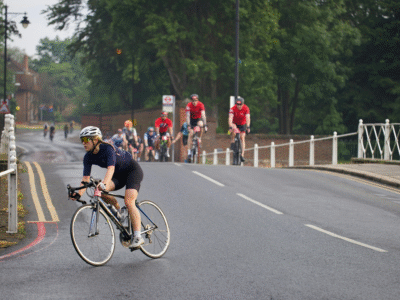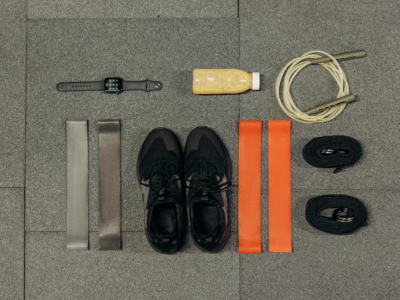What six rounds at Durlston Country Park taught L360’s Evelyn Richards about strength, pacing and not fearing the climb.
On a flat course, I usually clock around 25 minutes for a 5k, give or take. But the first time I showed up to Durlston Country Park parkrun — officially the hilliest parkrun in Britain — I knew those numbers were about to take a hit. And they did, big time.
Despite giving it everything I had, my best time at Durlston so far is 31 minutes. That’s six whole minutes slower than my average parkrun time. Despite it being far from my PB, I’m very proud of that achievement.
This course has over 200 metres of elevation crammed into just 5k. That’s like running up a 70-storey building, then down, then up again. It’s coastal paths, sharp climbs, uneven terrain, switchbacks and wind that laughs in your face.
If you’re about to take on a brutal hill run or want to get stronger on inclines, here are the running tips I’ve picked up the hard way.
Read more: This fitness technique could be the secret to transforming your running
View this post on Instagram
A post shared by Durlston Country Park parkrun (@durlstoncountryparkparkrun)
How to get better at hill runs
-
Short strides mean big wins
Trying to muscle your way up hills with big strides? Rookie mistake. I learned to shorten my stride and increase my cadence.
It feels slower, but it saves energy and keeps your rhythm consistent.
-
Lean from the ankles, not from the hips
On my first Durlston run, I caught myself bending right forward, which is a bad move.
The trick is to lean into the incline from your ankles, keeping your chest up and lungs open. You’ll breathe easier and run stronger.
-
Your arms are your secret weapon
When your legs start are telling you ‘no more’, your arms can keep the momentum going.
I use mine to drive up each climb: elbows bent, hands relaxed. It’s a small change that makes a huge difference.

Read more: How to start running as a beginner and what you’ll need
-
Don’t chase your flat course pace
This one took me a while to accept. You can’t run a 25-minute 5k pace on a hilly course. Trust me, I tried.
Now, I run based on effort, not speed. That means letting go of the numbers and focusing on staying strong through every climb.
-
Train the terrain
After my first run, I started adding hill repeats and trail sessions into my weekly routine. Nothing prepares you for elevation like doing it again and again.
An added bonus is that training like this will make your flat runs feel like flying.
-
Downhill is not a break
I used to think descents were rest time — this is wrong. They’re another skill to master.
Stay light on your feet, lean slightly forward and don’t overstride. You’ll save your quads and maybe even shave a few seconds off.
-
Start strength training
Running uphill is a full-body effort. I started doing squats, lunges, step-ups and glute work regularly.
Not only did I feel stronger on climbs, but my recovery time also got shorter.

Read more: ‘I tested 6 different running gels — this is the one I’m going to use on my half marathon’
-
Break the climb into chunks
One of the longest hills at Durlston feels endless. So, I trick my brain: I pick a tree or bend in the path and just run to that. Then I pick the next one.
It turns a monster climb into a series of small, achievable wins.
-
Wear the right kit
Trail shoes with good grip are a must, especially if it’s been raining.
My go-to pair are the Saucony Peregrine 15, with a PWRTRAC outsole for exceptional durability and grip as well as foam for comfort. They’re great for speed and control. Buy from Saucony for £130.
Also, layers you can peel off easily. Hills make you heat up fast, even when it’s cold.
Read more: The 8 best running shoes to help crush your PB in 2025
-
Redefine success
Durlston taught me that running is about more than speed. It’s about resilience. About showing up for something hard, knowing it won’t be fast or easy — but doing it anyway. Every step uphill is proof of strength.
Running the Durlston Country Park parkrun will humble you, then empower you. I may never break 30 minutes there, and honestly that’s fine.
Each time I cross that finish line, I know I’ve done something tougher than a stopwatch can measure.
Feature image: Pexels













